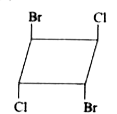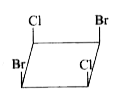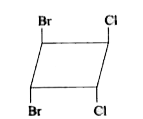Which of the following structures provides flexibility to a joint while at the same time resisting dislocation?
Articular cartilage
Muscles
Synovial fluid
Ligaments
The correct Answer is:D
To determine which structure provides flexibility to a joint while also resisting dislocation, we can analyze each option provided:
1. Articular Cartilage:
- Articular cartilage is a specialized connective tissue found in diarthrodial joints. Its main function is to provide a smooth surface for articulation and reduce friction between bones during movement. However, it does not contribute to the flexibility of the joint or prevent dislocation.
- Conclusion: This option does not meet the criteria.
2. Muscles:
- Muscles are composed of muscle fibers and are primarily responsible for movement through contraction. While they do allow for movement and flexibility, they do not directly prevent dislocation of joints.
- Conclusion: This option does not meet the criteria.
3. Synovial Fluid:
- Synovial fluid is a viscous fluid found in the cavities of synovial joints. Its main role is to lubricate the joint and reduce friction between the articular cartilage during movement. However, it does not provide structural support to prevent dislocation.
- Conclusion: This option does not meet the criteria.
4. Ligaments:
- Ligaments are bands of dense, fibrous, and elastic tissue that connect the ends of bones together to form a joint. They provide stability to the joint and prevent dislocation while allowing for some degree of flexibility. Their elastic nature helps maintain joint integrity during movement.
- Conclusion: This option meets both criteria of providing flexibility and resisting dislocation.
Final Answer: The structure that provides flexibility to a joint while at the same time resisting dislocation is ligaments.
- Articular cartilage is a specialized connective tissue found in diarthrodial joints. Its main function is to provide a smooth surface for articulation and reduce friction between bones during movement. However, it does not contribute to the flexibility of the joint or prevent dislocation.
- Conclusion: This option does not meet the criteria.
- Muscles are composed of muscle fibers and are primarily responsible for movement through contraction. While they do allow for movement and flexibility, they do not directly prevent dislocation of joints.
- Conclusion: This option does not meet the criteria.
- Synovial fluid is a viscous fluid found in the cavities of synovial joints. Its main role is to lubricate the joint and reduce friction between the articular cartilage during movement. However, it does not provide structural support to prevent dislocation.
- Conclusion: This option does not meet the criteria.
- Ligaments are bands of dense, fibrous, and elastic tissue that connect the ends of bones together to form a joint. They provide stability to the joint and prevent dislocation while allowing for some degree of flexibility. Their elastic nature helps maintain joint integrity during movement.
- Conclusion: This option meets both criteria of providing flexibility and resisting dislocation.
Topper's Solved these Questions
- BOOK - ICSECHAPTER - LOCOMOTIONA ND MOVEMENT EXERCISE - TEST YOUR PROGRESS ( OBJECTIVE TYPE QUESTIONS ) (Fill in the blanks with appropriate words.)20videos
LOCOMOTIONA ND MOVEMENT
- BOOK - ICSECHAPTER - LOCOMOTIONA ND MOVEMENT EXERCISE - TEST YOUR PROGRESS ( OBJECTIVE TYPE QUESTIONS ) (State whether the following statements are true or false .)17videos
LOCOMOTIONA ND MOVEMENT
- BOOK - ICSECHAPTER - LOCOMOTION AND MOVEMENTEXERCISE - LONG ANSWER TYPE QUESTIONS14videos
LOCOMOTION AND MOVEMENT
- BOOK - ICSECHAPTER - MINERAL NUTRITION EXERCISE - NCERT EXERCISE WITH ANSWER (DIFFERNTIATE BETWEEN )9videos
MINERAL NUTRITION
Similar Questions
Knowledge Check
- Question 1 - Select One
Which of the following structures is chiral?
A B
B C
C D
D
- Question 2 - Select One
Which of the following is an ohmic resistance ?
ALEDBjunction diodeCfilament of a bulbDnichrome wire.
Which of the following are analogous structures?
View SolutionWhich of the following pair has same structure?
View SolutionWhich of the following does not provide long term immunity?
View SolutionWhich of the following are tetrahedral structures ? .
View SolutionWhich of the following is a cartilaginous joint?
View SolutionWhich of the following is a cartilaginous joint?
View Solution


